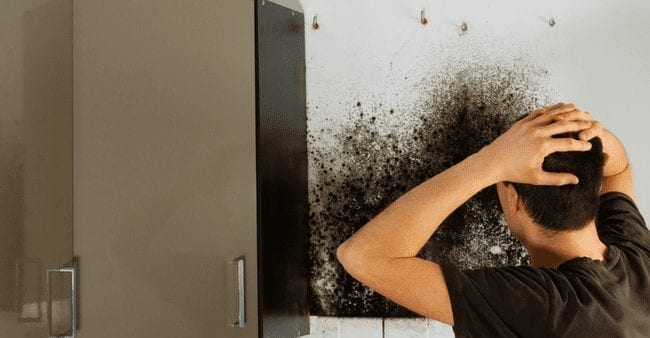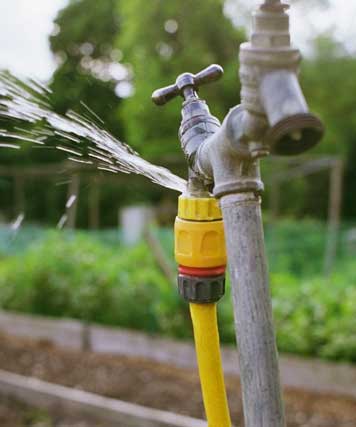Overview To Water Leak Discovery In The House
Overview To Water Leak Discovery In The House
Blog Article
We have stumbled upon this great article pertaining to Hacks to detect leaks directly below on the web and believe it made sense to relate it with you on my blog.

Early discovery of dripping water lines can mitigate a prospective calamity. Some small water leaks might not be visible.
1. Take A Look At the Water Meter
Every residence has a water meter. Checking it is a surefire manner in which aids you find leaks. For starters, switch off all the water sources. Make certain nobody will purge, utilize the faucet, shower, run the cleaning maker or dishwasher. From there, most likely to the meter and watch if it will transform. Considering that nobody is using it, there ought to be no movements. That suggests a fast-moving leak if it relocates. If you detect no modifications, wait an hour or 2 as well as examine back again. This suggests you might have a sluggish leak that can also be underground.
2. Inspect Water Intake
Assess your water bills and track your water consumption. As the one paying it, you ought to discover if there are any type of inconsistencies. If you detect sudden changes, despite your consumption being the same, it means that you have leaks in your plumbing system. Remember, your water bill should drop under the very same array on a monthly basis. An abrupt spike in your costs shows a fast-moving leakage.
On the other hand, a stable boost monthly, even with the very same behaviors, reveals you have a sluggish leakage that's likewise slowly escalating. Call a plumber to thoroughly inspect your property, particularly if you really feel a warm area on your floor with piping beneath.
3. Do a Food Coloring Examination
When it comes to water usage, 30% comes from commodes. If the shade in some way infiltrates your bowl throughout that time without flushing, there's a leak in between the tank and also dish.
4. Asses Outside Lines
Don't fail to remember to check your outside water lines also. Examination faucets by connecting a garden hose. Needs to water seep out of the connection, you have a loose rubber gasket. Replace this as well as make sure all connections are tight. It will certainly assist obtain it professionally checked out as well as kept yearly if you have actually got a lawn sprinkler system. One tiny leak can lose lots of water as well as increase your water expense.
5. Inspect as well as Examine the Scenario
Home owners must make it a routine to check under the sink counters and also also inside cupboards for any bad odor or mold growth. These two red flags show a leak so prompt interest is called for. Doing routine examinations, even bi-annually, can conserve you from a significant issue.
Inspect for stainings as well as weakening as a lot of home appliances and pipelines have a life span. If you suspect dripping water lines in your plumbing system, do not wait for it to intensify.
Early discovery of leaking water lines can reduce a potential catastrophe. Some little water leaks may not be visible. Examining it is a proven means that assists you discover leaks. One little leakage can squander loads of water and also surge your water bill.
If you suspect dripping water lines in your plumbing system, don't wait for it to escalate.
How to Know If Your Home Has a Hidden Leak
Water Meter Reveals Inexplicable Water Usage
If you’d like to test whether or not there’s a leak somewhere in your home, you can do this using your water meter. Here is how to conduct the test:
Don’t use any water in your home for at least 30 minutes; this also means not turning on faucets or water-using appliances.
Go outside, and check your water meter for activity.
If your water meter shows that there was activity, even though no one was using any water, this proves that there is a leak in your home.Visible Mold or Mildew Growth
Leaks behind walls create moist, dark environments that allow mold and mildew to grow and thrive. Eventually, you might see mold growth forming on the wall closest to a hidden leak.
If mold is growing in an area that receives a high amount of moisture, such as a bathroom, it may simply be an indication that better ventilation is needed. However, if you see mold growth on a wall or the ceiling in an area where you would not expect, you probably have a hidden leak.
Musty, Mildew Odor
Sometimes you might not be able to see the mold or mildew that is growing as a result of a leak. However, the smell can give the problem away just as easily. If you catch a whiff of something musty, there’s a good chance that old water is collecting somewhere in your home that you can’t see.
Stained/Warped Walls, Ceilings, or Floors
When your home soaks up water, a variety of red flags can become visible, including ceiling stains, bubbling drywall, warped walls, and sagging floors. While these issues can be caused by excess humidity, they can also be signs that a pipe or plumbing connection has started leaking behind your walls.
Inexplicably High Water Bill
After a while, you get a general sense for what your water bill should be. If you own a pool or sprinkler system, your bill will tend to be higher during summer. However, if you receive a water bill that seems especially high, and you can’t figure out what caused it, then you may have a hidden leak somewhere that’s increasing your bill.
https://www.plumbingjoint.com/blog/2019/july/how-to-know-if-your-home-has-a-hidden-leak/

I was made aware of that write-up on Leaking water lines from an associate on a different website. For those who enjoyed our blog posting plz don't forget to share it. Thanks a lot for your time. Please check our site back soon.
Report this page